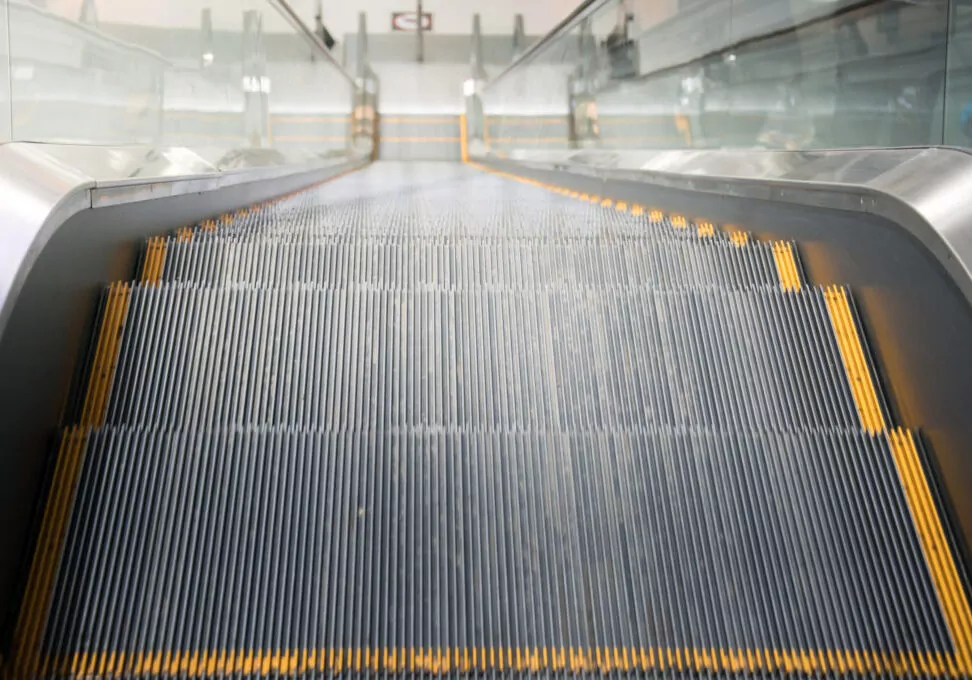Can you guess the top speed of the first elevator? Launched in the late 1800s, it chugged 40 feet per minute. Still, it was too fast for experts at the time who warned it could cause “a disordered nervous system.” Today, the fastest elevator in the world zooms 67 feet per second in the Shanghai Tower.
Let’s take a brief look at elevator law. Elevators are now such a normal part of everyday life that we hardly consider the convenience they bring — or the fact that elevator owners and operators are actually considered common carriers in California. The latter has legal implications, which is good to keep in mind should you or a loved one — against all odds — get injured in an elevator accident.
What does it mean that elevators are common carriers?
California is one of a handful of states that classify elevators as common carriers. Generally speaking, the law looks at those machines just like a taxi, limo service, airline, or train — they move a person from one spot to another — and are therefore subject to a higher standard of care (duty). In short, a common carrier is a person or a commercial enterprise that transports passengers or goods for a fee and establishes that their service is open to the general public.
Private carriers, in contrast, don’t establish that their service is open to the general public and enter into a contract with each customer.
California law, CACI No. 902, specifies the duty of a common carrier as follows:
Common carriers must carry passengers safely. Common carriers must use the highest care and the vigilance of a very cautious person. They must do all that human care, vigilance, and foresight reasonably can do under the circumstances to avoid harm to passengers. While a common carrier does not guarantee the safety of its passengers, it must use reasonable skill to provide everything necessary for safe transportation, in view of the transportation used and the practical operation of the business.
An old case with a big impact on liability for elevator accidents
Interestingly, the history behind the common-carrier doctrine for owners and operators of elevators (and escalators) in California dates back to a 1889 case, Treadwell v. Whittier, which established:
The aged, the helpless, and the infirm daily using these elevators. The owners make profit by these elevators, or use them for the profit they bring to them. The cruelty from a careless use of such contrivances is likely to fall on the weakest of the community. The law, therefore, throws around such persons its protection, by requiring the highest care and diligence.
The language of that ruling (“use them for profit”) is invoked today when defendants argue they cannot be classified as common carriers since they don’t charge a fee. In fact, the law says elevator owners are still common carriers by profiting from the use of the elevators whether a fee is charged or not. For example, an owner of a shopping mall with elevators benefits from patrons using the ride to access and spend money in the stores.
Basic premises liability may come into play, too
In addition to common carrier liability, elevator accidents that can be attributed to a property owner’s negligent oversight may also fall under basic premises liability. This means all property owners must protect guests (that includes most trespassers) and individuals on the property by ensuring there are no dangers present.
Does the elevator owner have a permit?
In California, any business that operates an elevator must have a permit. According to the Department of Industrial Relations:
No elevator shall be operated without a valid, current permit issued by the Division. The permit, or a copy thereof, to operate a passenger elevator, freight elevator or incline elevator shall be posted conspicuously and securely in the elevator car. For other devices, the permit shall be available on the premises.
A state inspector must also check the condition of the elevator or escalator to determine if it is safe for passengers. In addition to an inspection, the business must submit plans to the state that outline the maintenance service contract. The business will only receive a permit to operate after they complete this process.
Slips and falls dominate elevator accident statistics
Serious elevator accidents and fatalities are, thankfully, relatively rare. A report by the U.S. Bureau of Labor Statistics and the Consumer Product Commission showed elevators cause around 27 fatalities and 10,200 serious injuries a year. Half of those fatalities involved workers performing repairs, maintenance, or installations on top or near the elevators. In terms of relative risk of death, elevator accidents rank behind car accidents, lightning strikes, shark attacks, and plane crashes.
But while serious injuries as a result of elevator accidents grab the biggest headlines, the most common claims against elevator owners are for everyday-type injuries like slips and falls.
We are here to help
If you have been injured as the result of an elevator accident, the experienced lawyers at Penney & Associates are here to help. We have successfully helped people in similar situations earn the injury compensation they deserve. Contact us today for more information.



